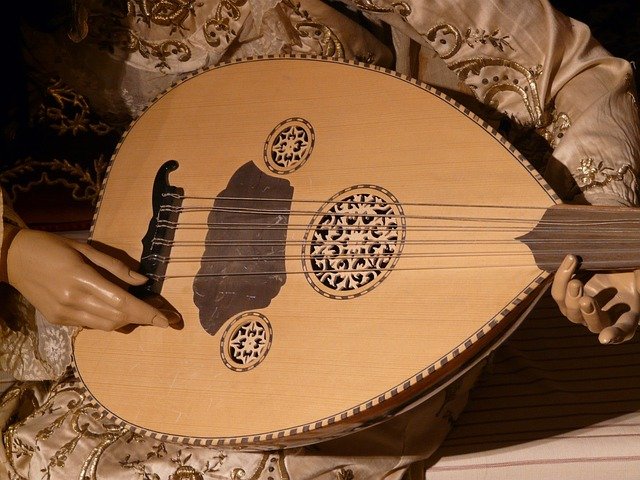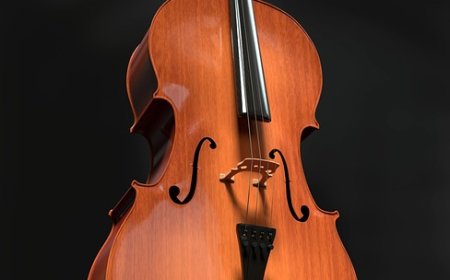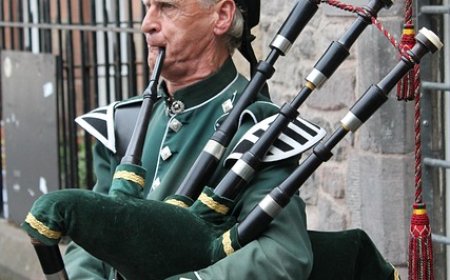Mandolin Facts for Students | Discover the Sound and History of the Mandolin
Learn about the mandolin—a small, bright-sounding string instrument used in folk, classical, and bluegrass music. Explore its parts, how to play it, and famous mandolin players.

🪕 All About the Mandolin
🥇 Introduction
The mandolin is a small string instrument with a sweet, bright, and twinkly tone. It's shaped like a teardrop and is often played with a pick to create fast and lively music. The mandolin is popular in bluegrass, folk, Irish, and classical music, and its high-pitched melodies and choppy rhythm playing make it stand out in any ensemble. Despite its small size, it has a powerful voice and lots of personality.
🎶 What Is a Mandolin?
The mandolin is a fretted, plucked string instrument that usually has eight strings in four pairs (called courses). Each pair of strings is tuned and played together, giving the mandolin its signature bright, ringing tone.
It is played by:
-
Pressing the strings on the frets with one hand
-
Plucking or strumming with a pick in the other hand
Mandolins come in several types:
-
A-style - Teardrop-shaped with a simple design
-
F-style - Fancier body shape with a decorative scroll, often used in bluegrass
-
Bowlback - Round-backed mandolins used in classical music
The most common tuning for mandolin is G-D-A-E, just like a violin!
🧩 Parts of the Mandolin
The mandolin may be small, but it has many parts that help it sing clearly:
-
Body - The hollow part that amplifies the sound
-
Top (Soundboard) - Usually made of spruce, where the strings rest
-
Neck - The long, thin part with frets
-
Fingerboard - The smooth front where fingers press the strings
-
Strings - Usually 8 (4 pairs) tuned in unison
-
Frets - Metal strips that divide the neck into notes
-
Bridge - Holds the strings up and transfers vibrations to the body
-
Tuning Pegs - Used to tighten or loosen each string
-
Tailpiece - Anchors the strings at the bottom
-
Pickguard - Protects the top of the mandolin from scratches
Many mandolins also have sound holes, shaped like ovals or f-holes, depending on the style.
⚙️ How Does the Mandolin Work?
The mandolin works by vibrating strings when they are plucked with a pick. The vibrations travel through the bridge and into the body, where the sound is amplified and projected out of the sound holes.
The paired strings give the mandolin a full and shimmering tone, especially when played with quick up-and-down picking, a technique called tremolo. Players use this to hold long notes or play fast melodies.
Because it's tuned like a violin, mandolin players can use melody, harmony, and chords-making it great for both rhythm and solos.
📜 History of the Mandolin
The mandolin developed in Italy during the 1600s, evolving from older string instruments like the lute. The bowlback mandolin was used in classical music and opera, and composers like Vivaldi and Mozart wrote music for it.
In the 1800s, mandolins spread across Europe and into the United States. By the early 1900s, mandolin orchestras were popular in America. In the 1940s, Bill Monroe, the "Father of Bluegrass," helped turn the mandolin into a key bluegrass instrument with fast picking and improvisation.
Today, mandolins are used in many styles, including folk, classical, bluegrass, Irish, Celtic, country, rock, and even jazz.
🥁 Famous Mandolin Players
These musicians helped make the mandolin popular and exciting:
-
Bill Monroe - The founding father of bluegrass music
-
Chris Thile - A virtuoso player known for solo, classical, and Punch Brothers
-
David Grisman - Combined bluegrass and jazz in a style called "Dawg music"
-
Sierra Hull - A modern bluegrass and folk mandolinist
-
Carlo Aonzo - An Italian classical mandolin performer
-
Andy Irvine - Irish folk player from the band Planxty
-
Ry Cooder - Rock and folk guitarist who also plays mandolin
🎶 Learning to Play the Mandolin
The mandolin is a great instrument for students who enjoy:
-
Bright melodies and fast finger work
-
Playing in folk or bluegrass bands
-
Learning both chords and single-note lines
Beginners learn:
-
Tuning (G-D-A-E)
-
Playing basic open chords
-
Using a pick with alternating strokes
-
Simple scales and melodies
-
The tremolo technique for sustaining notes
It's a bit smaller and tighter than a guitar, so young learners may need time to build finger strength, but they'll love how quickly they can make it sing!
😄 Fun Facts About the Mandolin
-
The mandolin is tuned just like a violin (G-D-A-E).
-
Tremolo picking lets the mandolin play long, held-out notes.
-
Mandolin orchestras were as popular as guitar groups in the early 1900s.
-
The F-style mandolin is named after its fancy Florentine design.
-
Mandolins are often used in movie soundtracks for rustic or historic scenes.
-
The mandola is a larger version of the mandolin.
-
A mandolin's sound can cut through a full band despite its size!
👧 Kid-Friendly Summary
The mandolin is a small string instrument with eight strings in four pairs. It has a cheerful, twinkly sound and is fun to play fast music on. You pluck it with a pick and press the strings with your fingers. It's great for bluegrass, folk, and even classical music!
📚 Vocabulary Words
Mandolin – A small plucked string instrument with eight strings in four pairs
Fret – Metal strip on the neck that helps create different notes
Tremolo – A quick up-and-down picking motion that makes a note sound longer
Bridge – A piece that holds the strings up and sends vibration into the body
Tailpiece – The part that anchors the strings to the body
Chords – A group of notes played at the same time
Sound Hole – Opening in the body that lets sound out
Pick – A small tool used to pluck or strum the strings
❓ Interactive Quiz (8 Questions)
1. How many strings does a standard mandolin have?
A. Four
B. Six
C. Eight
D. Ten
2. What is a tremolo on the mandolin?
A. A kind of chord
B. A fast picking motion
C. A tuning method
D. A sound hole shape
3. What is the most common tuning for mandolin?
A. E-A-D-G
B. G-C-E-A
C. G-D-A-E
D. D-G-B-E
4. What type of music did Bill Monroe play?
A. Jazz
B. Rock
C. Bluegrass
D. Classical
5. What part of the mandolin holds the strings at the bottom?
A. Bridge
B. Tailpiece
C. Headstock
D. Sound hole
6. What shape is an F-style mandolin known for?
A. Circle
B. Scroll
C. Triangle
D. Square
7. Which famous player blends classical and bluegrass on mandolin?
A. Chris Thile
B. Jake Shimabukuro
C. Yo-Yo Ma
D. George Harrison
8. What is a mandola?
A. A brand of mandolin
B. A type of pick
C. A larger mandolin
D. A tiny banjo






















































